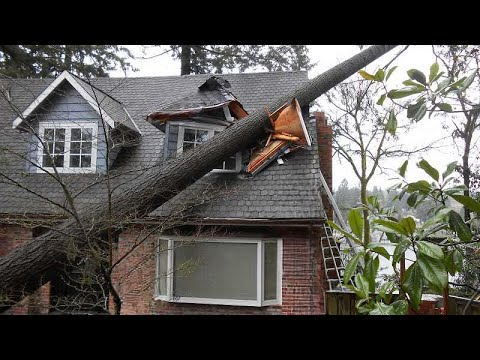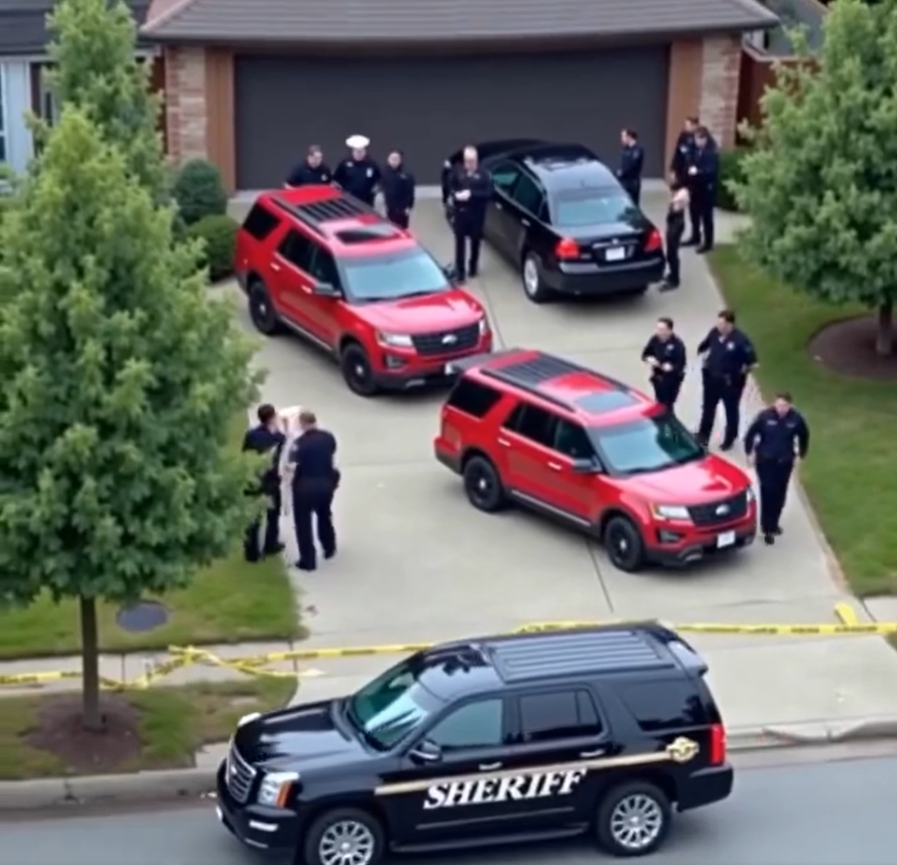Cutting down a large tree may seem straightforward, but in reality, it is one of the riskiest tasks a homeowner or worker can attempt. Videos circulating online often capture shocking scenes where tree felling goes terribly wrong—trees toppling onto homes, fences, power lines, and even vehicles. While these clips may be jaw-dropping to watch, they highlight a serious truth: tree removal is not a casual do-it-yourself project.
When handled without expertise, what should be a controlled process quickly turns into chaos. Understanding the science, safety measures, and best practices behind tree felling can mean the difference between a successful job and a costly disaster.
This article explores why untrained tree cutting is dangerous, the common mistakes people make, and why professional arborists are the safest solution for homeowners.
The Risks of Tree Removal
Unlike trimming shrubs or mowing the lawn, removing a tree involves heavy equipment, advanced calculations, and respect for nature’s unpredictability. A mature tree can weigh several tons, and once it begins to fall, there is no way to stop its momentum.
Some of the risks include:
- Property Damage: A poorly aimed cut can send a tree crashing into homes, sheds, or vehicles.
- Injury or Fatality: Chainsaws, falling branches, and unpredictable tree movement pose life-threatening dangers.
- Power Line Hazards: Trees falling into electrical lines can spark fires or cut off entire neighborhoods from power.
- Legal and Financial Liability: Homeowners may face expensive repair bills and potential lawsuits if their DIY project causes damage to neighboring property.
Common Mistakes in DIY Tree Felling
Videos often show the same mistakes repeated by inexperienced cutters. These errors reveal how easy it is for things to spiral out of control.
1. Incorrect Notching and Back-Cutting
A notch and back-cut must be precise to guide the direction of the fall. Poor technique often causes the tree to lean unpredictably or split dangerously.
2. Misjudging Weight and Balance
Branches and uneven growth affect how a tree falls. Failing to account for this often results in a tree toppling the wrong way.
3. Ignoring Wind Direction
Even a light wind can shift a falling tree. Amateurs often overlook this factor, causing unexpected outcomes.
4. Using Inadequate Equipment
Chainsaws, ropes, and safety gear designed for professionals are very different from standard consumer tools. Using the wrong equipment increases the risk of mistakes.
5. Working Alone
Tree removal should never be attempted without assistance. Solo attempts eliminate the possibility of a spotter or emergency backup.
Environmental Factors That Influence Tree Felling
Tree removal is not just about sawing through the trunk—it requires an understanding of physics and the environment.
- Soil Stability: Weak or waterlogged soil can cause trees to fall in unintended directions.
- Tree Health: Rot, disease, or hollow cores make trees unpredictable when cut.
- Nearby Structures: Houses, garages, fences, and even underground utilities must be considered before removal.
- Wildlife Impact: Trees may provide habitats for birds or animals, which should be taken into account before felling.
Why Hiring Professionals Matters
Certified arborists undergo training not only in the technical aspects of cutting trees but also in safety procedures and environmental responsibility. Hiring professionals ensures:
- Correct Assessment: Arborists analyze tree health, structure, and potential risks before removal.
- Specialized Equipment: Cranes, harnesses, and heavy-duty saws make the process safer and more efficient.
- Insurance Coverage: Professional services carry liability insurance, protecting homeowners from unexpected costs.
- Sustainable Practices: Experts know how to dispose of wood properly or recycle it into mulch and other uses.
Real-Life Consequences of Unsafe Tree Cutting
Every year, emergency services respond to accidents involving tree removal. Homeowners attempting DIY tree felling often underestimate the dangers until it is too late. Some documented incidents include:
- Trees crushing vehicles during removal attempts.
- Falling trunks breaking through roofs, leaving families with massive repair bills.
- Injuries caused by kickback from improperly handled chainsaws.
- Electrocutions from contact with overhead power lines.
These stories serve as sobering reminders that what may appear to be a cost-saving task can quickly become life-threatening.
Safer Alternatives for Homeowners
If you have a tree that needs to be removed or trimmed, consider safer alternatives before attempting it yourself:
- Hire Licensed Arborists: Look for professionals certified by organizations such as the International Society of Arboriculture (ISA).
- Schedule Regular Maintenance: Preventive care, such as pruning, can reduce the need for full removals later.
- Consult Utility Companies: If a tree is near power lines, only trained crews should handle it.
- Use Landscaping Services: Professionals can suggest alternatives to removal, such as cabling or bracing.
The Role of Education and Awareness
One of the reasons unsafe practices are so common is a lack of public awareness. Many people underestimate the complexity of tree work, viewing it as a simple matter of “cutting wood.” By promoting education about arboriculture, communities can reduce accidents and encourage safe practices.
Homeowners, schools, and local governments can work together to:
- Offer workshops on safe landscaping practices.
- Provide resources for hiring qualified professionals.
- Share safety guidelines through community programs.
Conclusion: Respect the Power of Nature
Tree felling is not just another household chore—it is a highly technical operation that requires respect for nature and the risks involved. The viral clips of failed tree removals may seem entertaining at first glance, but they highlight serious dangers that no homeowner should ignore.
The key takeaway is simple: cutting corners in tree removal often leads to disaster. By recognizing the complexity of the task and seeking professional help, families can protect their homes, their finances, and most importantly, their lives.
When it comes to handling massive trees, don’t gamble with safety. Call a professional and ensure the job is done the right way.



